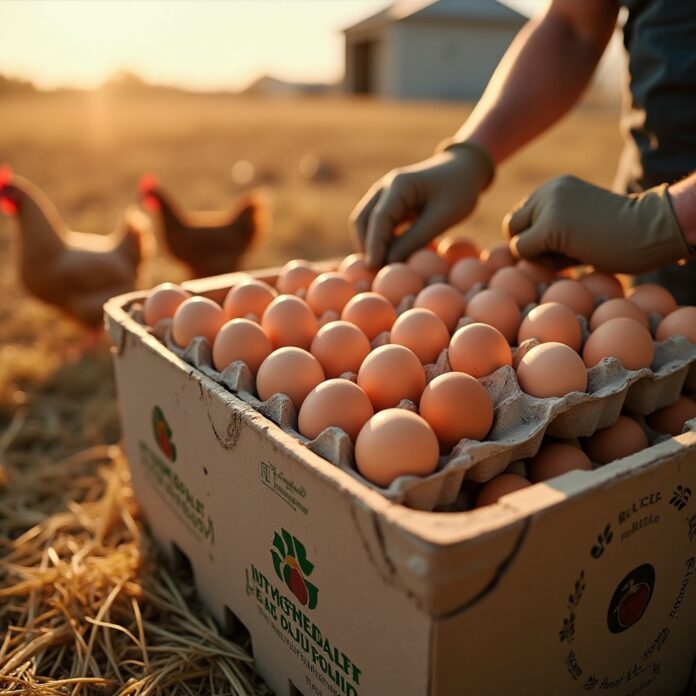The Critical Role of Egg Trays in Modern Poultry Farming
Eggs are fragile. A single cracked shell can turn a profitable batch into a loss, and for poultry farmers, that’s more than an inconvenience—it’s a direct hit to your livelihood. Egg trays aren’t just containers; they’re silent partners in your business, working behind the scenes to protect your eggs from farm to table. Modern egg trays are engineered to absorb shocks, prevent shifting during transport, and keep eggs intact even on bumpy roads. They’re not just boxes—they’re insurance policies for your hard work.
The world is shifting away from single-use plastics and foam packaging. Governments are banning polystyrene in states like Maine and New York, and consumers increasingly demand eco-friendly options. A 2023 survey found that 68% of buyers are willing to pay more for eggs in recyclable or compostable packaging. Recycled egg trays cut material costs by up to 30% compared to virgin plastics, aligning with regulatory trends and consumer values.
Recycled Materials in Egg Tray Production
Recycled materials save budgets while meeting demand for sustainability. Waste paper, cardboard, agricultural residues, and post-consumer plastics are key players.
- Waste paper and cardboard: Cheap, abundant, and sturdy once processed. Major manufacturers use 100% recycled paper fibers for scalable, durable trays.
- Agricultural residues: Rice husks, sugarcane bagasse, and wheat straw add durability. Trays blended with 20% rice husk pulp show 15% higher crush resistance.
- Post-consumer plastics: Recycled PET offers moisture resistance. Farms in humid climates report 40% fewer losses with these trays.
Recycled materials reduce costs—waste paper is 30% cheaper than virgin pulp. A study found trays with rice husks lasted 25% longer in transport cycles, cutting long-term replacement costs. Compliance with regulations like the EU’s Single-Use Plastics Directive avoids fines and positions brands as market leaders.
Egg Tray Manufacturing Process
The process transforms recycled materials into functional trays through pulping, molding, drying, and quality control.
- Pulping: Shredded materials are soaked into a slurry. Adding rice husks reinforces the mix.
- Molding: Hydraulic presses shape pulp into customizable trays. Small farms use $5,000 manual presses (500 trays/hour); large operations use automated lines (6,000+ trays/hour).
- Drying: Sun drying (free but slow) or industrial dryers (20–30 minutes at 200°F). Humidity control is critical—improper drying risks mold.
- Quality control: Drop tests, moisture checks, and weight capacity trials ensure durability.
Equipment costs range from $10,000 for small setups to $500,000 for automated lines. Precision in molding prevents operational issues, like trays damaging egg grading machines.
Cost Analysis: Breaking Down Expenses
Every penny matters in farming. Key costs include materials, labor, and energy:
- Materials: $0.02–$0.05 per tray (recycled paper) or $0.01–$0.03 (agricultural waste).
- Labor: $0.01 per tray for semi-automated lines; $0.005 for fully automated.
- Energy: $3–$10/hour for dryers; energy-efficient models cut costs by 40%.
Profit Example:
Producing 1,500 trays/hour at $0.08/tray yields $46/hour profit. Scaling to 8 hours/day generates $368 daily. Bulk orders (20,000+ units) slash costs by 50–80%, while custom molds ($1,000–$5,000) save labeling expenses.
Hidden costs like breakage (5% loss = $20 per 100 dozen eggs) make sturdier trays a strategic investment.
Supplying Egg Trays to Poultry Farms
Customization and logistics define success:
- Size adjustments: Trays for jumbo eggs reduce breakage from 8% to 2%.
- Branding: Farms stamp logos directly into trays, selling them as collectibles for premium prices.
- Local sourcing: Reduces transport costs. Vietnamese farmers use rice husk-lined baskets made within 50 miles.
- Stackability: Interlocking trays cut shipping container needs by 25%, saving $18 per 1,000 trays.
Trials and transparency build trust. Offering free samples and problem-solving partnerships (e.g., pest-resistant redesigns) secure long-term clients.
Market Trends Shaping the Future
Regulations, material innovations, and e-commerce drive change:
- Plastic bans: Recycled molded fiber trays dominate, projected to hit $10.7B by 2034.
- Material innovations: Mycelium (mushroom-based) trays compost in 45 days; algae blends repel moisture.
- E-commerce: Tamper-proof trays with QR codes boost online sales. Drop-test videos on social media attract buyers.
- AI and automation: AI optimizes mold designs (18% less pulp use); smart sensors track shipping conditions.
Case Studies: Success Stories
- Premier1 Supplies: Dishwasher-safe trays cut annual costs by 90% and won Whole Foods contracts.
- AGICO’s 1,500pcs/h Line: A Nigerian startup broke even in 8 months, supplying 30+ local farms.
- GreenEgg Farms: Switched to recycled paper, cutting costs 22% and boosting sales 18%.
- CP Foods: Recycled PET trays reduced monsoon losses to 5%, increasing exports by 30%.
- Vietnam’s Grassroots Solution: Bamboo baskets with rice husks eliminated packaging costs.
Building a Sustainable Future
Egg trays are a linchpin of profitability and sustainability. Key steps:
- Adopt recycled materials to cut costs and comply with regulations.
- Invest in scalable equipment tailored to your farm’s size.
- Customize solutions for durability, branding, and logistics.
- Embrace trends like AI, local sourcing, and e-commerce readiness.
The future belongs to farmers who balance practicality with innovation. Protect your eggs, please your customers, and future-proof your business—one tray at a time.


